Energy and the Polar Environment: Virtual Bookshelf
The Virtual Bookshelf provides a list of recommended children’s books that reflect the theme of the issue and offers ideas on how to integrate them across the curriculum.
Our sun. The source of all life on earth, and all energy, too. Its light heats the air in our atmosphere. Plants absorb energy from light and become fuel for animals. Plants and animals die and decay, enriching our soil – some becoming coal or petroleum through geological time.
The polar regions are mysterious when it comes to energy. The sun’s rays are less direct than in other parts of the world. Some times the sun shines all day and night, and at other times it is completely absent for weeks. Ice and snow cover much of these regions, insulating themselves against heat and reflecting precious rays back into the sky. Yet as the earth warms and ice in the Arctic and Antarctica melts, the exposed land and water are able to absorb more energy, and promote further melting. While elementary students aren’t quite ready to tackle this cycle, they can be introduced to the basic scientific principles of absorption and reflection of light.
This month’s books are organized into three categories: Light, Energy Sources, and, of course, Penguins and Polar Bears. As always, we focus almost exclusively on nonfiction. This genre, while often underrepresented in the primary and elementary years, can capture student interest, build motivation, and set an authentic purpose for reading: to learn how the world works. It also promotes the integration of literacy skills into the science curriculum.
Light
Use these books in conjunction with the lessons and activities featured in “Hands-on Science and Literacy Activities About Solar Energy.”
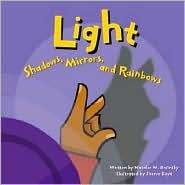 |
Light: Shadows, Mirrors and Rainbows. Natalie M. Rosinsky. 2003. Nonfiction book. Recommended ages: Grades K-2.This book teaches us that colors are reflections of light. If we see shapes or shadows in a dark room, that means there is at least some visible light in the room. Smooth and shiny surfaces reflect light the best – with mirrors reflecting almost all of the light that hits them. The moon is bright but does not generate its own light – similar to the way the poles reflect light with their massive amounts of snow and ice. A good companion to hands-on explorations with light. |
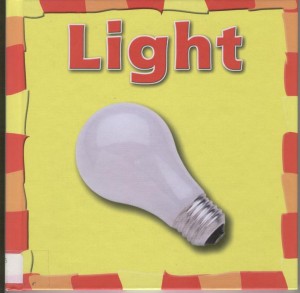 |
Light. Becky Olien. 2003. Nonfiction book. Recommended ages: Grades 1-3.Introduces light, its behavior, and uses. Each page is devoted to a single topic, meaning that a single page could be used to introduce a particular concept, such as reflection. A hands-on activity at the end of the book provides an opportunity to investigate shadows. |
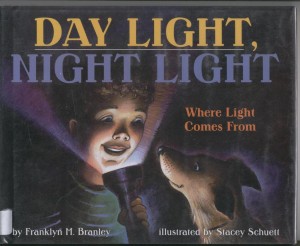 |
Day Light, Night Light: Where Light Comes From. Franklyn M. Branley. 1998. Nonfiction book. Recommended ages: Grades 1-3.What makes light? How can we see objects that don’t make their own light? This book introduces the concepts of light-producing objects, the reflection of light, and why we can see objects. Use this book before or during a study of light and its properties. |
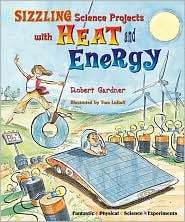 |
Sizzling Science Projects with Heat and Energy. Robert Gardner. 2006. Nonfiction book. Recommended ages: Grades 4-5.More than just experiments. Learn why temperature and energy are not the same thing, how light can be changed to heat, and how sunlight can be used to produce electricity. Each activity is followed by an explanation, ensuring that students learn the underlying concepts. Best for individual exploration, but you can use the ideas to design activities or learning centers. |
Energy Sources
These books can be used to supplement the lessons and activities in “Teaching About Natural Resources and Energy Sources.”
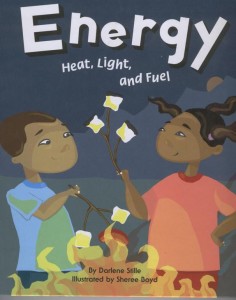 |
Energy: Heat, Light and Fuel. Darlene Stille. 2004. Nonfiction book. Recommended ages: Grades K-2.An introduction to heat, light and fuel that defines energy and its sources. More detail is provided on solar, hydroelectric, and fossil fuels. The book’s large size is perfect for sharing at the beginning of an energy unit. |
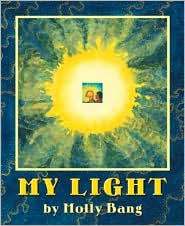 |
My Light. Molly Bang. 2004. Picture book. Recommended ages: Grades K-2.Stunning illustrations show how the sun drives all of our energy on earth. The book discusses many complex concepts in simple language. Teachers will want to preview the book and consider their students’ needs. The book could be used in many different ways, such as a picture walk or part of a learning center. |
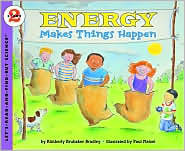 |
Energy Makes Things Happen. Kimberly Brubaker Bradley. 2003. Nonfiction book. Recommended ages: Grades K-3.This book focuses on energy in all its forms and how energy is transferred from one form to another. It also helps students trace the energy found in plants and fossil fuels back to the sun’s light. |
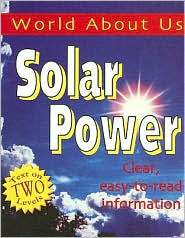 |
World About Us Series. Various authors. 2007. Nonfiction books. Recommended ages: Grades 4-5.Seven titles in this series cover different energy resources: Coal, Gas, Oil, Nuclear, Solar, Water, and Wind. An additional book covers energy usage around the world and future resources. Each title explains how the resource works, the advantages and disadvantages of its use, and its availability. Great series for an energy unit and for compare/contrast studies or debates. |
Penguins and Polar Bears
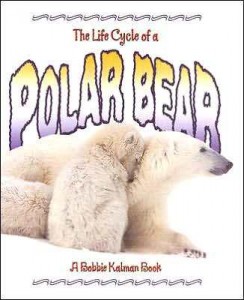 |
Life Cycle of a Polar Bear. Rebecca Sjonger and Bobbie Kalman. 2006. Nonfiction book. Recommended ages: Grades 3-5.This book describes polar bears, their habitat, and their life cycle as well as the threats of melting ice caps, pollution, and human settlement. This book would fit well with a unit on mammals, life cycles, or the polar regions. |
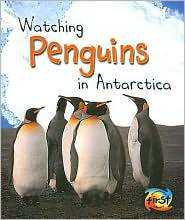 |
Watching Penguins in Antarctica. Louise and Richard Spilsbury. 2006. Nonfiction book. Recommended ages: Grades 2-4.Follow emperor penguins as they gather in rookeries, toboggan over the ice and hunt in the ocean. Color photographs accompany the straightforward text. Boldfaced words and a glossary help students learn about behaviors such as preening. After reading, students could observe the birds in a zoo or a video and watch for examples of the described behaviors. |
This article was written by Kate Hastings. For more information, see the Contributors page. Email Kimberly Lightle, Principal Investigator, with any questions about the content of this site.
Copyright October 2008 – The Ohio State University. This material is based upon work supported by the National Science Foundation under Grant No. 0733024. Any opinions, findings, and conclusions or recommendations expressed in this material are those of the author(s) and do not necessarily reflect the views of the National Science Foundation. This work is licensed under an Attribution-ShareAlike 3.0 Unported Creative Commons license.











